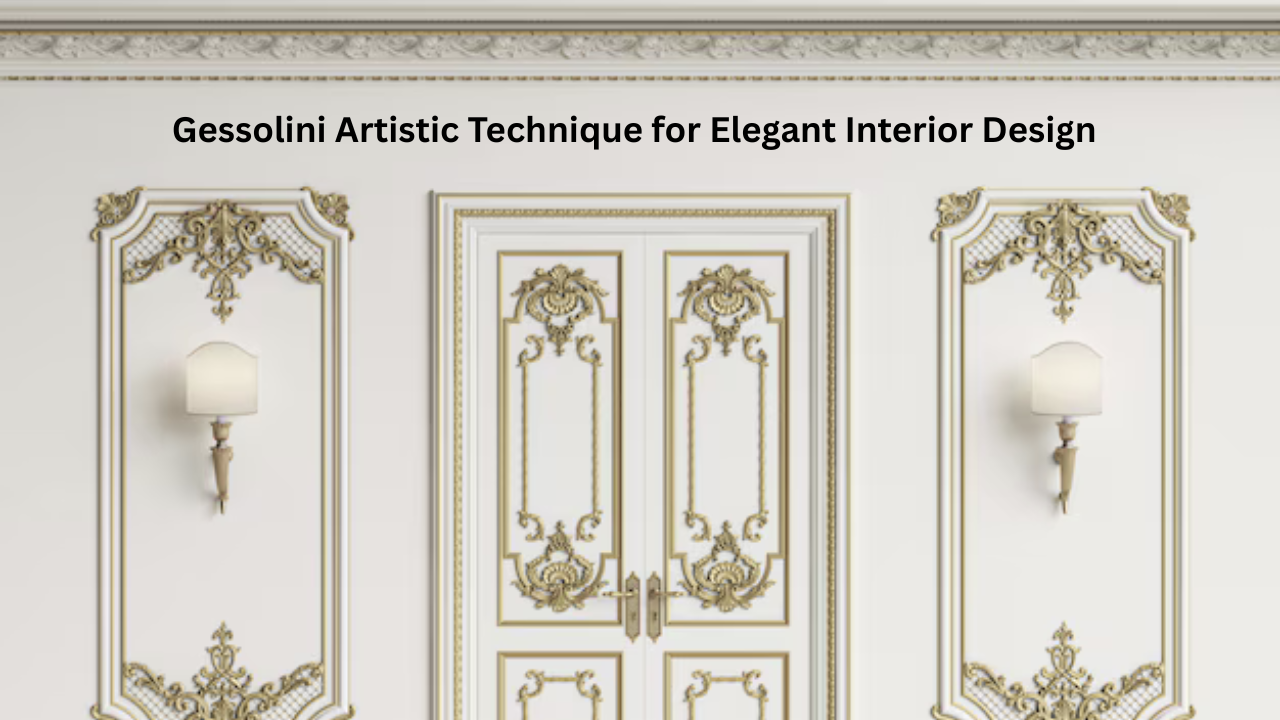Did you know that ancient Roman villas used decorative plaster techniques that still inspire modern interior design today? Gessolini represents one of Italy’s most refined artistic traditions, creating stunning wall surfaces through the application of layered plaster.
This centuries-old method transforms ordinary walls into masterpieces of texture and visual depth. Professional decorators and homeowners alike praise its ability to add sophistication to any space.
How can a simple plaster technique revolutionise your interior design approach? This article reveals practical methods, cost-effective applications, and design secrets that bring Italian elegance into contemporary homes.
Table of Contents
What Gessolini and its roots in Italian craftsmanship
Gessolini originated during Italy’s Renaissance period when master craftsmen developed sophisticated decorative wall techniques. This artistic method combines traditional lime-based plasters with precise application methods to create textured surfaces that reflect light beautifully.
Renaissance artists perfected these techniques in Venetian palaces and Florentine churches. They understood that walls could become canvases for artistic expression through careful layering and texture manipulation.
Historical Development of the Italian Wall Technique
The technique emerged from practical needs during the 15th century. Italian builders required durable wall finishes that could withstand the harsh Mediterranean climate conditions while maintaining aesthetic appeal.
Master plasterers passed their knowledge through generations, refining methods and tools. Each region developed unique variations, creating distinctive local styles within the broader decorative wall techniques tradition.
Key Historical Facts
Understanding Gessolini’s historical timeline helps appreciate its enduring appeal in modern interior design. These documented milestones show how Italian craftsmen refined the technique across centuries.
- First documented use: Florence, 1420s
- Peak popularity: 16th-17th centuries
- Modern revival: 1980s interior design movement
- Current applications: Luxury homes, hotels, restaurants
Archaeological evidence shows similar techniques in ancient Roman structures. The Pantheon’s interior walls demonstrate early plaster artistry that influenced later Renaissance developments.
How Gessolini shaped walls with artistic textures
Modern Gessolini application involves multiple thin plaster layers built up systematically. Each layer serves specific purposes: base adhesion, texture creation, and final finishing that produces depth and visual interest.
Professional applicators use specialised trowels and brushes to create layered plaster patterns. The technique requires patience, as each layer must dry properly before adding subsequent coats.
Creating Three-Dimensional Wall Art Through Plaster Finishes
Three-dimensional textures emerge through careful manipulation of wet plaster. Craftsmen create raised patterns, subtle undulations, and shadow-catching surfaces that change appearance throughout the day as light angles shift.
Stucco decorative art techniques complement its methods perfectly. Artists combine both approaches to achieve complex visual effects impossible with standard paint applications.
Essential Application Steps
Professional installation requires a systematic approach following time-tested methods. Each step builds upon previous work to achieve the distinctive textured finish.
- Surface Preparation
- Clean walls thoroughly
- Apply primer coat
- Check for structural issues
- Base Layer Application
- Mix plaster to the proper consistency
- Apply evenly with a steel trowel
- Allow a 24-hour drying period
- Texture Layer Creation
- Build up raised areas gradually
- Use specialized texture tools
- Maintain consistent moisture levels
- Final Finishing
- Sand high spots carefully
- Apply protective sealers
- Polish to the desired sheen level
Professional decorator Maria Rossi from Milan explains, “Gessolini requires understanding plaster behaviour at different humidity levels. Each application teaches you something new about material properties.”
Using Gessolini to Add Intricate Patterns to Interior Spaces
Interior decorative plaster applications vary widely depending on room function and design goals. Living areas benefit from subtle texture variations, while dining rooms can handle more dramatic pattern work.
Intricate patterns develop through the systematic buildup of plaster elements. Geometric designs, organic flowing shapes, and architectural details all become possible through skilled application techniques.
Design Applications for Different Room Types
Every room presents unique opportunities for decorative wall techniques based on function and lighting conditions. Strategic placement maximises visual impact while respecting practical needs.
Living Room Applications:
- Accent walls with gentle texture variation
- Fireplace surrounds with raised patterns
- Ceiling details that complement furniture
- Corner treatments that soften angular spaces
Bedroom Environments:
- Headboard wall emphasis through texture
- Soft patterns that promote relaxation
- Subtle color variations within plaster
- Sound-absorbing qualities for better sleep
Restaurant designer Francesco Belli notes, “We use Gessolini in dining establishments because it creates intimate atmospheres while remaining highly durable under commercial use conditions.”
Pattern Complexity Levels
| Pattern Type | Application Time | Skill Level Required | Maintenance Needs |
| Simple Texture | 2-3 days | Intermediate | Annual cleaning |
| Geometric Design | 5-7 days | Advanced | Bi-annual touch-ups |
| Organic Patterns | 7-10 days | Professional | Professional maintenance |
| Architectural Details | 10-14 days | Master craftsman | Specialist care |
The Blend of Renaissance Art Influences and Modern Materials
Renaissance art influences continue to shape contemporary applications through updated material formulations. Modern acrylic additives improve durability while maintaining traditional aesthetic qualities.
Contemporary architects appreciate how classical techniques adapt to current building methods. Steel-frame construction and modern insulation systems work well with traditional plaster applications when properly planned.
Modern Material Innovations in Traditional Techniques
Modern materials enhance traditional plaster performance significantly. Polymer additives increase flexibility, reducing crack formation in buildings that experience thermal movement.
Fiber reinforcement creates stronger plaster bonds while maintaining workability. These improvements allow decorative wall techniques to succeed in challenging environments like coastal areas or regions with extreme temperature variations.
Material Comparison Chart:
| Component | Traditional Formula | Modern Enhancement | Performance Benefit |
| Base Binder | Lime putty | Lime + Polymer | 40% stronger adhesion |
| Aggregate | River sand | Graded silica | Improved texture control |
| Water | Natural | pH-balanced | Better workability |
| Additives | None | Fiber + Plasticizer | Crack resistance |
Architect Alessandro Verde from Rome observes, “Renaissance art influences provide timeless design principles, but modern materials let us apply them more reliably in today’s construction environment.”

